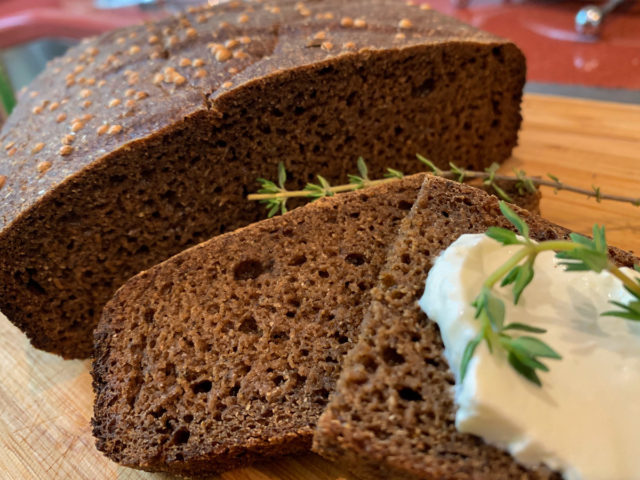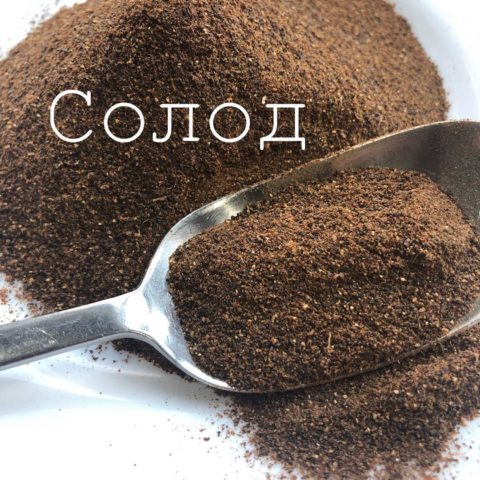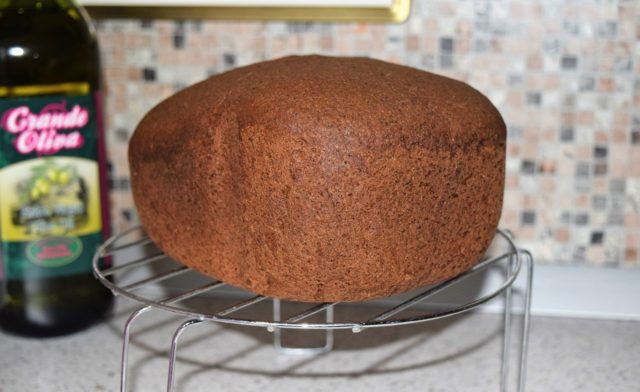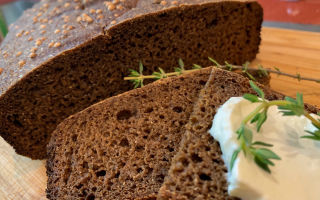Content
When planning to diversify your diet with new foods, you should find out how they affect the body. The benefits and harms of malted bread should be assessed before first use. This product has a positive effect on health, but for some diseases it is prohibited to include it in the menu.
What is and composition of malt bread
Nutritionists consider malt bread to be a healthy food. Loaves are baked from a mixture of millet and rye flour. When making them, in addition to the usual ingredients, malt is added. This substance is obtained during the germination of cereals: wheat, rye, barley, etc. It contains monosaccharides and amino acids, which give the bread a special taste and aroma.
Barley malt is most often used for baking. But, depending on the selected recipe, it can be changed to other extracts - wheat, rye or corn. This substance becomes the main ingredient in malted bread. Under its action, fermentation is enhanced, excess moisture is absorbed, and the elasticity of the dough increases.
Malt bread differs from other products in its dark color. The extracts added during baking act as natural colorants. Thanks to the amino acids and monosaccharides in the composition, the crust acquires an attractive brown color during baking.
The composition of malt bakery products includes:
- minerals: sodium, calcium, manganese, selenium, iron, copper, zinc, phosphorus, magnesium, potassium;
- vitamins: A, PP, C, E, K, group B, including pyridoxine, folic and pantothenic acids, thiamine, riboflavin;
- cellulose;
- beta carotene.
The substances contained in malted bread give it an extraordinary taste and affect the crumb structure. Extracts from sprouted grains are able to bind moisture and increase the shelf life of products.

Nutritional value and calorie content of malted bread
People who monitor weight, calculate the calorie content of the diet and the ratio of BJU in the menu, the nutritional value of malt bread will be interesting.
The composition contains:
- 7.5 g protein;
- 50.6 g of carbohydrates;
- 0.7 g fat.
The calorie content of 100 g of the finished product is 236 kcal.
Indicators may change if other components are included in the composition to improve taste. Most often, bakers add raisins, nuts, sunflower seeds, caraway seeds, coriander.
Benefits of malt bread
The substances contained in bakery products have a positive effect on the body:
- proteins, amino acids stimulate muscle development;
- fiber and dietary fiber normalize the digestive tract, prevent the development of inflammatory processes in the intestines;
- the body is saturated with vitamins, micro and macro elements necessary for the functioning of all organs and tissues.
The use of malted rye bread is recommended for people who are exhausted.It is advised to eat several pieces daily for anemia, in the period after operations, intense mental and physical exertion. The substances that make up this product have a regenerating effect on the body.
How to bake malt bread at home
After tasting commercial malt bread, many housewives want to make it at home. There are many recipes for preparing this product both in a bread maker and in a conventional oven. Taste, aroma, density will depend on which ingredients were used.
Rye-wheat sourdough bread with malt
To make a rye loaf, you need sourdough. It should be removed from the refrigerator in 12-16 hours and revived. For feeding, add 100 g of rye flour and 100 ml of water to the starter culture.
To make a loaf, you need a malt extract. It is steamed with boiling water and allowed to swell. If there is no time, then you can simply dilute the malt in water and add to the dough.

To prepare a loaf weighing 900 g, you will need the following components:
- 300 g wheat + 100 g peeled rye flour;
- 1 tbsp. l. granulated sugar and vegetable oil;
- 1 tsp salt;
- 2 tbsp. l. malt;
- 200 g sourdough;
- 310 ml of water.
Mix all the ingredients in a container prepared for kneading the dough. The result should be a sticky dough. If it spreads, you can increase the amount of flour to 350 g.
With hands moistened with water, form a ball and cover it with foil. It should be kept at a temperature of 26-28 ° C and a humidity of about 50%. It must be minced every hour with the addition of a small amount of wheat flour. After 3 hours of fermentation, transfer the dough to a baking dish and let stand for another 2 hours.
The malt bread is baked at 250 ° C for 15 minutes. After that, the temperature is reduced to 200 ° C and the loaf is left in the oven for another 40 minutes. 5-10 minutes before cooking, the crust can be sprinkled with water to obtain a glossy shine.
It is not recommended to immediately remove malt bread from the mold. You should hold it for 15-20 minutes.
Unleavened malt bread
To prepare 1 loaf you will need:
- 300 g wheat and 200 g rye flour;
- 40 g malt;
- 1 tsp salt;
- 1 tbsp. l. dry yeast and vegetable oil;
- 330 ml of water;
- ½ tsp coriander.
Before you start kneading the dough, you need to prepare the malt. It should be diluted in warm water. Then you can add the remaining ingredients. The kneaded dough should be left in a warm room. You should wait until the volume has increased 2-2.5 times.
After that, the dough is transferred to a mold and crushed so that no voids are formed. You cannot bake it right away, it should stand for 1-2 hours and rise. You need to put the dough in a mold in an oven preheated to 200 ° C for 40-50 minutes. Place the baked malt bread on a wire rack. After that, the loaf is sprinkled with water and wrapped with a towel.

The harm of malted bread
Malt baked goods are not suitable for everyone. The benefits of these products will be only if the person has no contraindications. It is not recommended to include them in the diet for patients diagnosed with the following diseases:
- gastritis;
- pancreatitis;
- cholecystitis.
The use of malted bread can provoke an exacerbation of these diseases due to high acidity. People who monitor weight should remember that 1 small loaf contains about 1000 kcal.
Conclusion
The benefits and harms of malted bread are assessed based on its effect on the body. In the absence of contraindications to use, it has a beneficial effect on health, saturates the body with the necessary vitamins, minerals, amino acids. But with diseases of the digestive tract, this product can provoke a deterioration.

